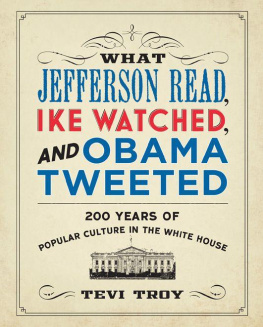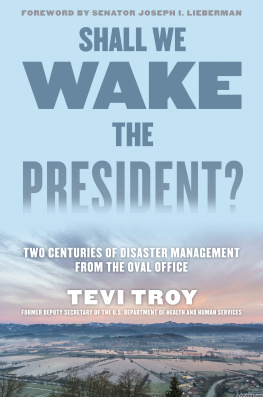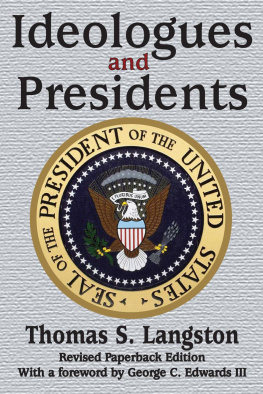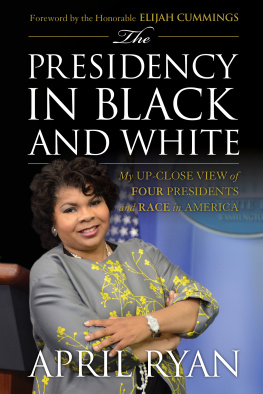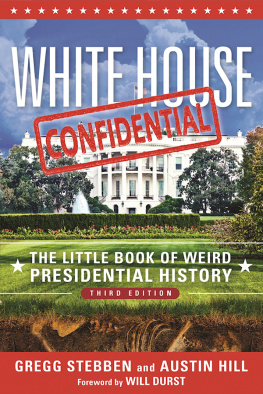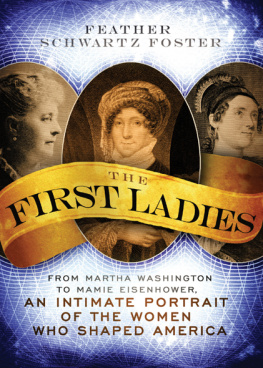CONTENTS
Guide
PRAISE FOR
FIGHT HOUSE
The White House is a dignified seat of government, but it is also bullpen, cockfight, and viper nest. During the Johnson and Nixon presidencies, these rivalries, encouraged by both chief executives, yielded policies contrary to presidential and national intention. Fight House at once illuminates these conflicts and reminds us of their absurd, and sometimes tragic, results. Fight House is a fast read, full of both gossip and deep insight.
Amity Shlaes, author of Great Society: A New History
Tevi Troy presents such a vivid and accurate portrait of the strife, sniping, backbiting, leaking, and intrigue in the Reagan White House that I found it perfectly excruciating to read. I mean that as a compliment. Deeply researched, briskly written, and full of judicious, useful lessons, Fight House is just a marvelous book.
Peter Robinson, the Murdoch Distinguished Policy Fellow at the Hoover Institution and a former speechwriter and special assistant to President Reagan
Fight House is an outstanding contribution to presidential history that reminds us that bitter conflicts within administrations are the norm, not the exception. Because he is that rare combination of historian and former White House aide, Tevi Troy is able to make the behind-the-scenes battles between cabinet officials and presidential aides come alive with deep political insights mixed with subtle wit. This book is a must-read for political junkies, historians, and all future White House transition teams.
Vincent J. Cannato, associate professor of history at the University of Massachusetts Boston and author of The Ungovernable City: John Lindsay and His Struggle to Save New York
Everything about working in the White House is magnifiedand nowhere is that more true than in the intensity of staff infighting. Tevi Troy tells the tale of the personalities who played hardball and the warring factions that shaped the modern presidency. Its a fun and fascinating bookessential to anyone who aspires to serve in the highest office in the land.
Anthony Scaramucci, founder of Skybridge Capital and former White House Director of Communications
Tevi Troy has done a superb job of chronicling infighting in the modern White House. I saw it firsthand from the Nixon White House and can vouch for the phenomenon. People already in positions of immense power almost inevitably seek even more. Troys analysis is must-reading for any fan of inside politics or presidential history.
Geoff Shepard, former senior member of President Nixons Domestic Council staff and author of The Real Watergate Scandal
Copyright 2020 by Tevi Troy
All rights reserved. No part of this publication may be reproduced or transmitted in any form or by any means electronic or mechanical, including photocopy, recording, or any information storage and retrieval system now known or to be invented, without permission in writing from the publisher, except by a reviewer who wishes to quote brief passages in connection with a review written for inclusion in a magazine, newspaper, website, or broadcast.
Regnery History is a trademark of Salem Communications Holding Corporation
Regnery is a registered trademark of Salem Communications Holding Corporation
Cover design by Joshua Taggert
ISBN 978-1-62157-836-9
ebook ISBN 978-1-62157-837-6
LCCN: 2019955272
Published in the United States by
Regnery History
An imprint of Regnery Publishing
A Division of Salem Media Group
300 New Jersey Ave NW
Washington, DC 20001
www.RegneryHistory.com
Books are available in quantity for promotional or premium use. For information on discounts and terms, please visit our website: www.Regnery.com.
The only thing new in this world is the history you havent read yet.
Harry Truman
What has been will be again, what has been done will be done again.
Ecclesiastes 1:9
Look around. There are no enemies here. Theres just good old-fashioned rivalry.
Bob Wells
To my friend and teacher Rabbi Levi Shemtov, who guided me through my own White House experience
PREFACE
W hen Dr. Tevi Troy approached me about writing Fight House for Regnery History, I had long thought a well-documented, entertaining history of modern White House rivalries was needed. I also knew that Tevi would do an excellent job.
As Tevi shows, White House infighting is nothing new. In fact, it is the rule; for there are many reasons for the legendary, often searing, rivalries. Some appointed to serve the president fight for their point of view; some fight to advance their careers, while others fight because it is in their nature. And Tevi didnt just dust off a few books to learn about White House infighting. He saw it firsthand while serving in the George W. Bush administration.
Whats more remarkable is the depths to which the fighting can sink. Harry Trumans secretary of state, George Marshall, for example, would not speak to the younger White House aide Clark Clifford, or ever mention his name again, after one bruising encounter. Over thirty years later, Reagan administration officials sank to planting leaks using the speaking styles of colleagues so that they could escape blame.
While many White House aides chronicled in these pages were, and many still are, listed in any Whos Who of Washington, from Arthur Schlesinger Jr. to Henry Kissinger to Donald Rumsfeld to Richard Cheney to Valerie Jarrett, there are many more figures, important in their day but now long forgotten, whom Tevi describes in gripping, and often humorous, language.
When Tevi mentioned to me that he would be using among his key sources columns written by my father, Robert Novak, and his partner, Rowland Evans, I was delighted. Not only because of the family connection, but because for fifty-plus years, Evans and Novak produced multiple weekly columns that contained news for the record, remarkable by the journalistic standards today. Most of the news they were reporting came from the sausage factory that is Washington, D.C. And many of the factory workers, as it happened, worked at the White House. The Evans and Novak columns were often the first thing read by Washington insiders to see who among them was up, who was down, and what the inside scoop was for that week. They would also eagerly read them to see if they were mentioned as a source or, more importantly, as a target.
My father and Rowly would press sources for information, starting early, having as many as two breakfasts a day or long lunches so they could meet more sources and obtain greater information. Which, of course, begs the question: Why do sources make themselves available like thisa risky activitywhen White House officials from the president on down can use their extraordinary powers to stop it? What I learned from my father, and in Tevis book, is that any leakers motives, so central to White House infighting, can range from the noble to the petty, from furthering a policy agenda to making themselves look good at the expense of others to getting back at their own administration for perceived slights, or just to feel like a big player in the game.


